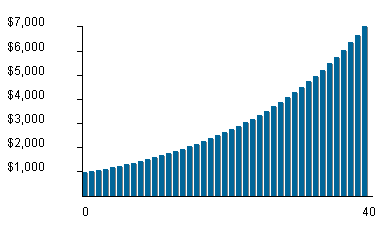I have limited investment knowledge and was hoping you guys could help me.
When investment sites and other places do hypothetical rate of return on stock market investments, they usually use a theoretical rate of return with compound interest. I have always wondered why or how a stock investment would return compound interest.
Evaluating the shape of the curves on the following charts,I can see that the stock market does tend to follow a compound interest profile, but I don't know why.
SP500
Basic Compound Interest Calculation

If I buy 7 shares of GSPC, I always have seven shares of stock (unless my stock splits, which doesn't necessarily occur at regular intervals). How will the returns compound unless I get more shares from the return, rather than just a higher stock price of my 7 shares.
Is the compound calculation used due to assumed dividend reinvestment combined with a few assumed splits over the life of the investment. I guess I just have trouble understanding the return compared to a savings account, for example. Is it assuming some compounding occuring on the company balance sheet?
Does any of my question make sense?
Thanks a ton, love the site.
(Edited for additional info/clarity)